Ahmed S. Zamzam
Non-Stationary Policy Learning for Multi-Timescale Multi-Agent Reinforcement Learning
Jul 17, 2023
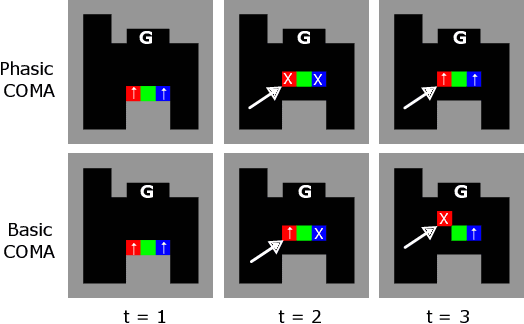

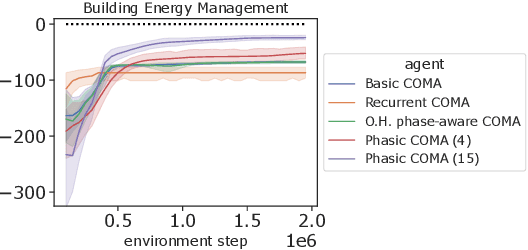
Abstract:In multi-timescale multi-agent reinforcement learning (MARL), agents interact across different timescales. In general, policies for time-dependent behaviors, such as those induced by multiple timescales, are non-stationary. Learning non-stationary policies is challenging and typically requires sophisticated or inefficient algorithms. Motivated by the prevalence of this control problem in real-world complex systems, we introduce a simple framework for learning non-stationary policies for multi-timescale MARL. Our approach uses available information about agent timescales to define a periodic time encoding. In detail, we theoretically demonstrate that the effects of non-stationarity introduced by multiple timescales can be learned by a periodic multi-agent policy. To learn such policies, we propose a policy gradient algorithm that parameterizes the actor and critic with phase-functioned neural networks, which provide an inductive bias for periodicity. The framework's ability to effectively learn multi-timescale policies is validated on a gridworld and building energy management environment.
Interpreting Primal-Dual Algorithms for Constrained MARL
Dec 01, 2022



Abstract:Constrained multiagent reinforcement learning (C-MARL) is gaining importance as MARL algorithms find new applications in real-world systems ranging from energy systems to drone swarms. Most C-MARL algorithms use a primal-dual approach to enforce constraints through a penalty function added to the reward. In this paper, we study the structural effects of this penalty term on the MARL problem. First, we show that the standard practice of using the constraint function as the penalty leads to a weak notion of safety. However, by making simple modifications to the penalty term, we can enforce meaningful probabilistic (chance and conditional value at risk) constraints. Second, we quantify the effect of the penalty term on the value function, uncovering an improved value estimation procedure. We use these insights to propose a constrained multiagent advantage actor critic (C-MAA2C) algorithm. Simulations in a simple constrained multiagent environment affirm that our reinterpretation of the primal-dual method in terms of probabilistic constraints is effective, and that our proposed value estimate accelerates convergence to a safe joint policy.
PowerGridworld: A Framework for Multi-Agent Reinforcement Learning in Power Systems
Nov 10, 2021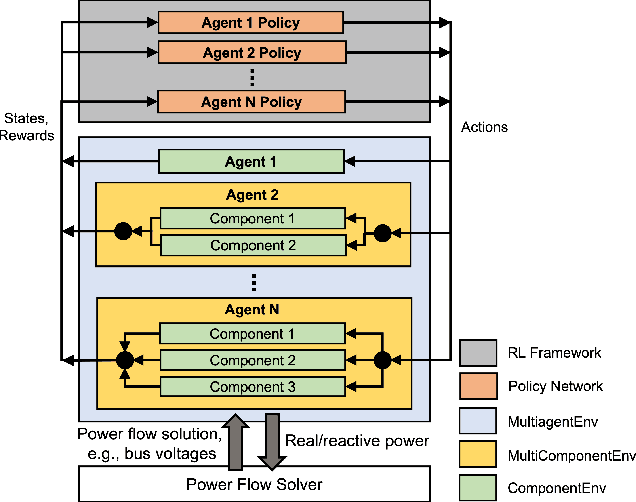
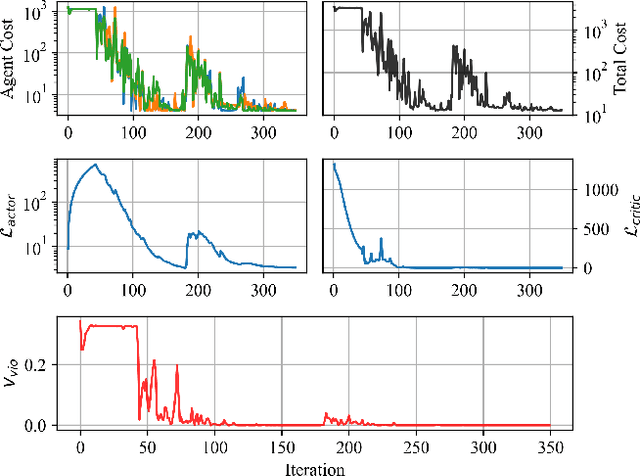
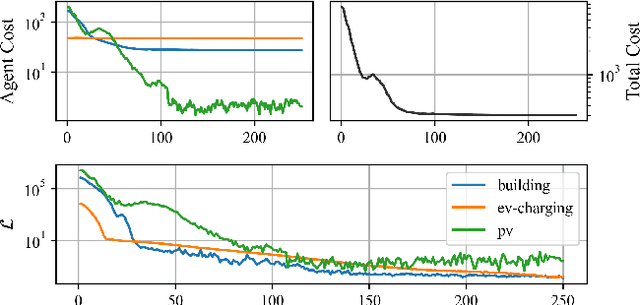

Abstract:We present the PowerGridworld software package to provide users with a lightweight, modular, and customizable framework for creating power-systems-focused, multi-agent Gym environments that readily integrate with existing training frameworks for reinforcement learning (RL). Although many frameworks exist for training multi-agent RL (MARL) policies, none can rapidly prototype and develop the environments themselves, especially in the context of heterogeneous (composite, multi-device) power systems where power flow solutions are required to define grid-level variables and costs. PowerGridworld is an open-source software package that helps to fill this gap. To highlight PowerGridworld's key features, we present two case studies and demonstrate learning MARL policies using both OpenAI's multi-agent deep deterministic policy gradient (MADDPG) and RLLib's proximal policy optimization (PPO) algorithms. In both cases, at least some subset of agents incorporates elements of the power flow solution at each time step as part of their reward (negative cost) structures.
OPF-Learn: An Open-Source Framework for Creating Representative AC Optimal Power Flow Datasets
Nov 03, 2021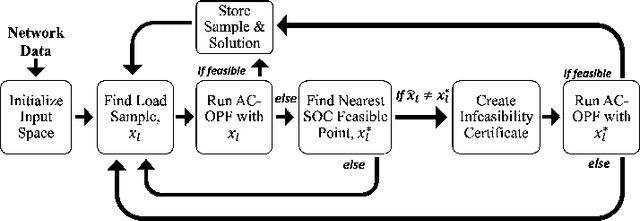
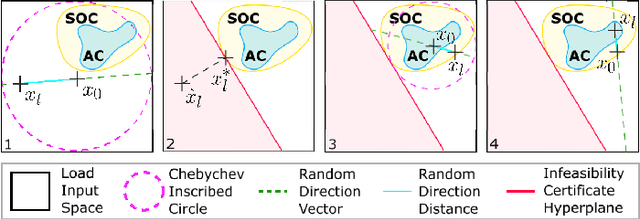
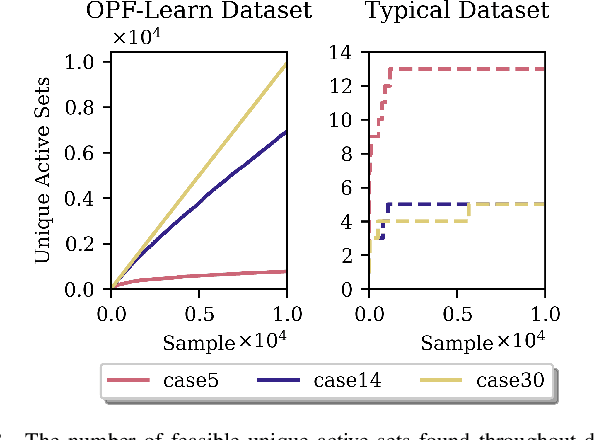
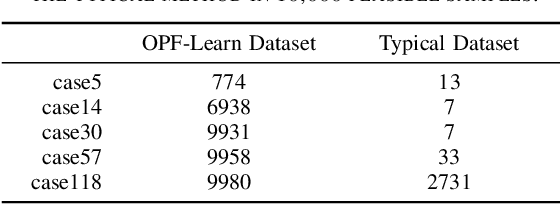
Abstract:Increasing levels of renewable generation motivate a growing interest in data-driven approaches for AC optimal power flow (AC OPF) to manage uncertainty; however, a lack of disciplined dataset creation and benchmarking prohibits useful comparison among approaches in the literature. To instill confidence, models must be able to reliably predict solutions across a wide range of operating conditions. This paper develops the OPF-Learn package for Julia and Python, which uses a computationally efficient approach to create representative datasets that span a wide spectrum of the AC OPF feasible region. Load profiles are uniformly sampled from a convex set that contains the AC OPF feasible set. For each infeasible point found, the convex set is reduced using infeasibility certificates, found by using properties of a relaxed formulation. The framework is shown to generate datasets that are more representative of the entire feasible space versus traditional techniques seen in the literature, improving machine learning model performance.
PHASED: Phase-Aware Submodularity-Based Energy Disaggregation
Oct 01, 2020

Abstract:Energy disaggregation is the task of discerning the energy consumption of individual appliances from aggregated measurements, which holds promise for understanding and reducing energy usage. In this paper, we propose PHASED, an optimization approach for energy disaggregation that has two key features: PHASED (i) exploits the structure of power distribution systems to make use of readily available measurements that are neglected by existing methods, and (ii) poses the problem as a minimization of a difference of submodular functions. We leverage this form by applying a discrete optimization variant of the majorization-minimization algorithm to iteratively minimize a sequence of global upper bounds of the cost function to obtain high-quality approximate solutions. PHASED improves the disaggregation accuracy of state-of-the-art models by up to 61% and achieves better prediction on heavy load appliances.
Model-Free State Estimation Using Low-Rank Canonical Polyadic Decomposition
Apr 13, 2020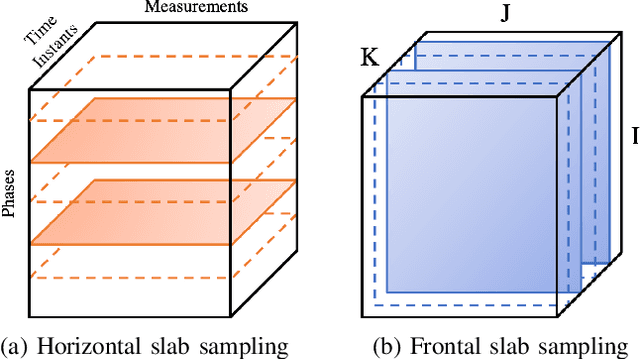
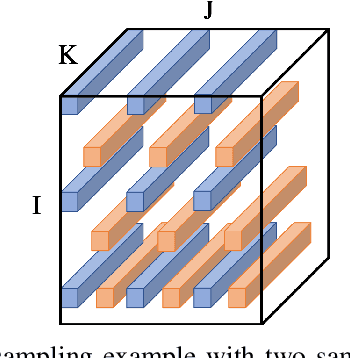
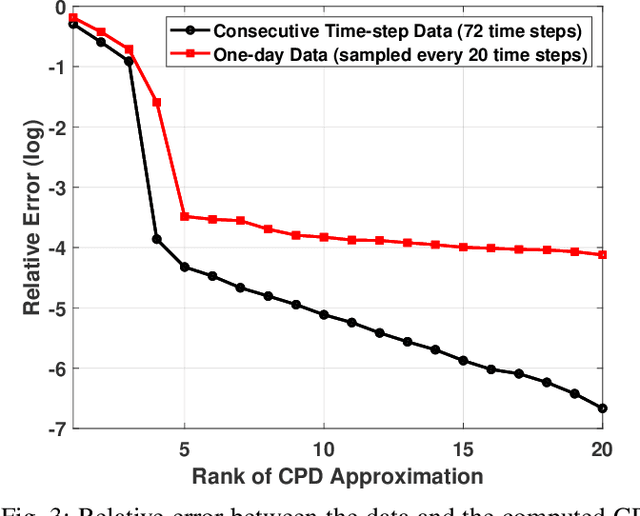
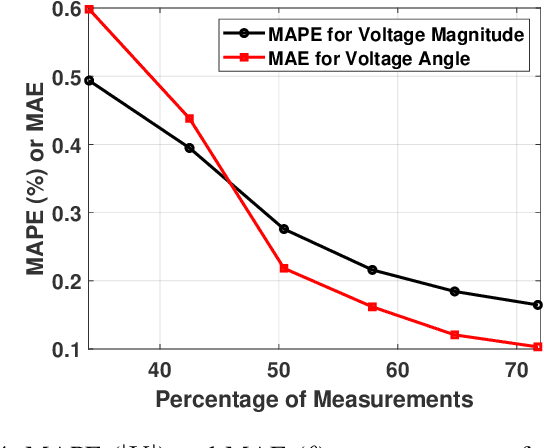
Abstract:As electric grids experience high penetration levels of renewable generation, fundamental changes are required to address real-time situational awareness. This paper uses unique traits of tensors to devise a model-free situational awareness and energy forecasting framework for distribution networks. This work formulates the state of the network at multiple time instants as a three-way tensor; hence, recovering full state information of the network is tantamount to estimating all the values of the tensor. Given measurements received from $\mu$phasor measurement units and/or smart meters, the recovery of unobserved quantities is carried out using the low-rank canonical polyadic decomposition of the state tensor---that is, the state estimation task is posed as a tensor imputation problem utilizing observed patterns in measured quantities. Two structured sampling schemes are considered: slab sampling and fiber sampling. For both schemes, we present sufficient conditions on the number of sampled slabs and fibers that guarantee identifiability of the factors of the state tensor. Numerical results demonstrate the ability of the proposed framework to achieve high estimation accuracy in multiple sampling scenarios.
GRATE: Granular Recovery of Aggregated Tensor Data by Example
Apr 05, 2020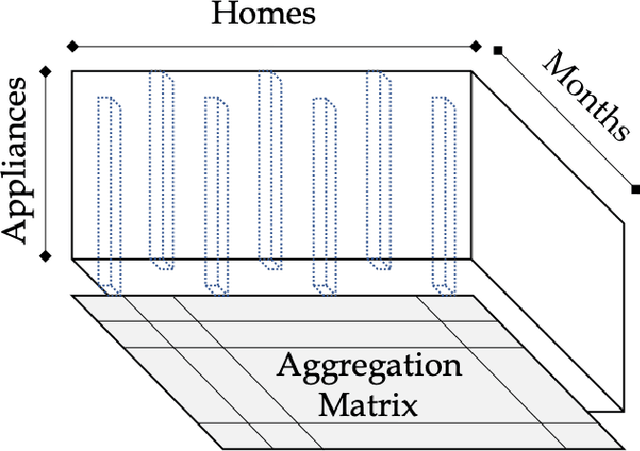
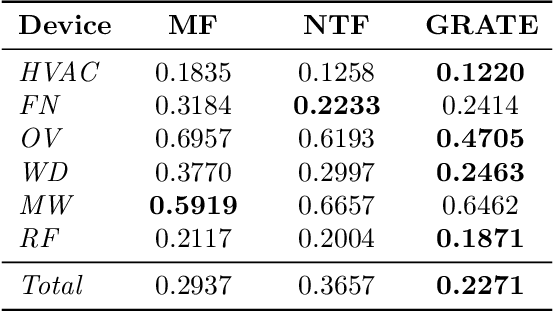
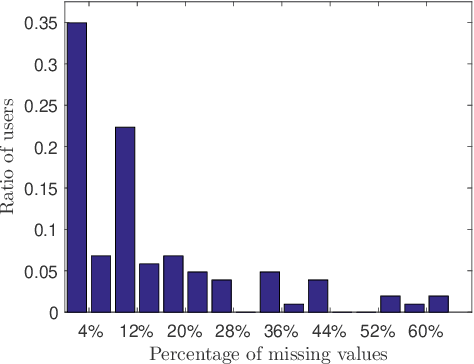
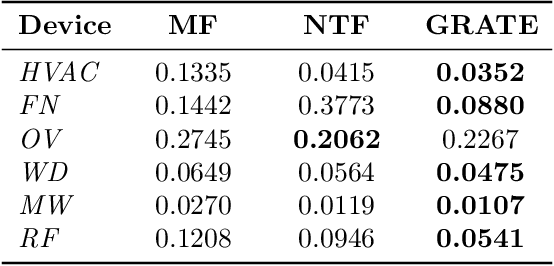
Abstract:In this paper, we address the challenge of recovering an accurate breakdown of aggregated tensor data using disaggregation examples. This problem is motivated by several applications. For example, given the breakdown of energy consumption at some homes, how can we disaggregate the total energy consumed during the same period at other homes? In order to address this challenge, we propose GRATE, a principled method that turns the ill-posed task at hand into a constrained tensor factorization problem. Then, this optimization problem is tackled using an alternating least-squares algorithm. GRATE has the ability to handle exact aggregated data as well as inexact aggregation where some unobserved quantities contribute to the aggregated data. Special emphasis is given to the energy disaggregation problem where the goal is to provide energy breakdown for consumers from their monthly aggregated consumption. Experiments on two real datasets show the efficacy of GRATE in recovering more accurate disaggregation than state-of-the-art energy disaggregation methods.
Energy Storage Management via Deep Q-Networks
Mar 26, 2019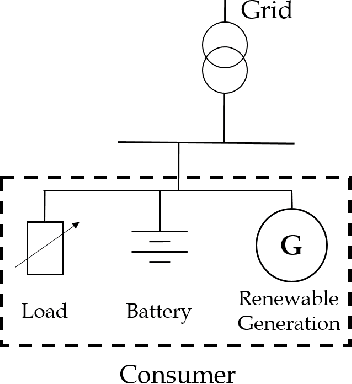
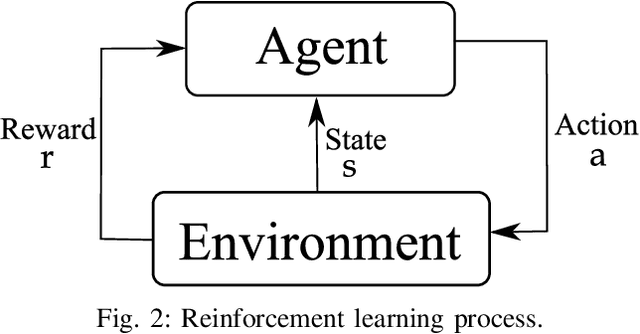
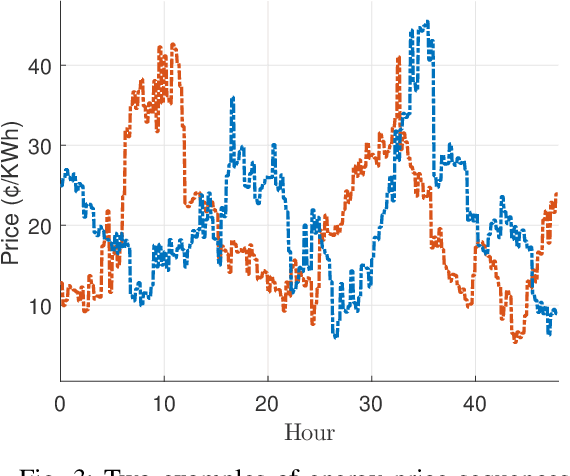
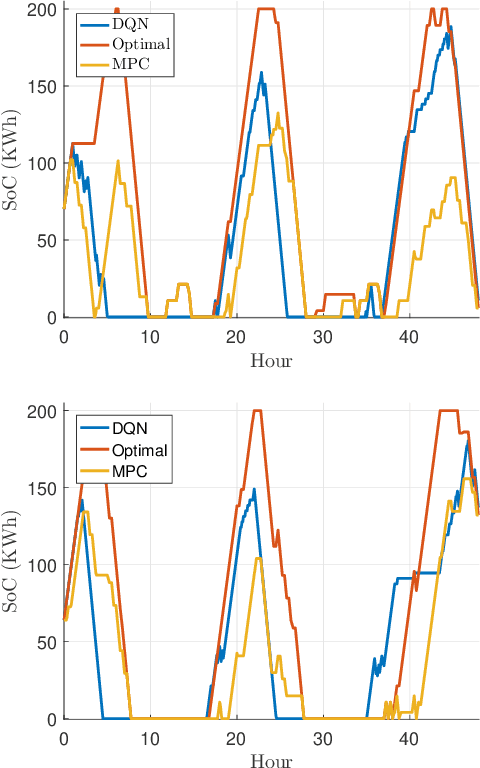
Abstract:Energy storage devices represent environmentally friendly candidates to cope with volatile renewable energy generation. Motivated by the increase in privately owned storage systems, this paper studies the problem of real-time control of a storage unit co-located with a renewable energy generator and an inelastic load. Unlike many approaches in the literature, no distributional assumptions are being made on the renewable energy generation or the real-time prices. Building on the deep Q-networks algorithm, a reinforcement learning approach utilizing a neural network is devised where the storage unit operational constraints are respected. The neural network approximates the action-value function which dictates what action (charging, discharging, etc.) to take. Simulations indicate that near-optimal performance can be attained with the proposed learning-based control policy for the storage units.
Coupled Graphs and Tensor Factorization for Recommender Systems and Community Detection
Sep 22, 2018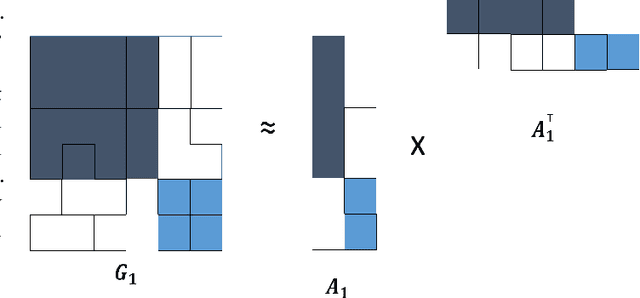

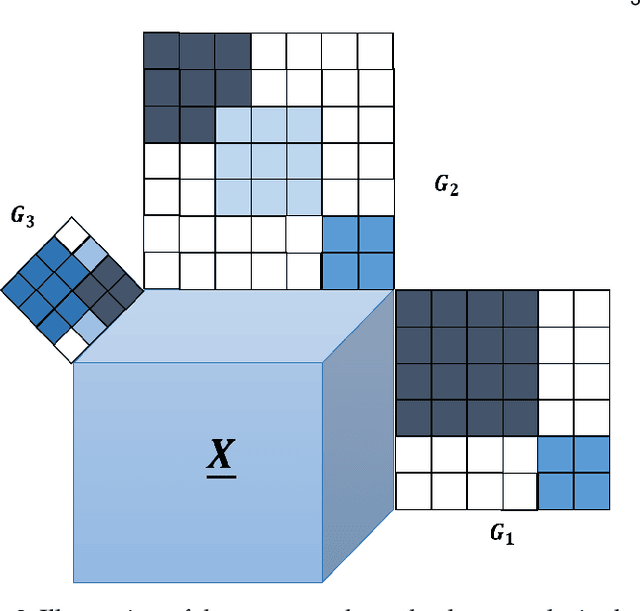
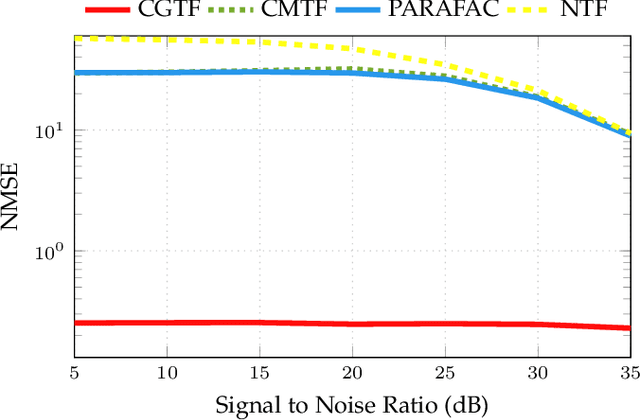
Abstract:Joint analysis of data from multiple information repositories facilitates uncovering the underlying structure in heterogeneous datasets. Single and coupled matrix-tensor factorization (CMTF) has been widely used in this context for imputation-based recommendation from ratings, social network, and other user-item data. When this side information is in the form of item-item correlation matrices or graphs, existing CMTF algorithms may fall short. Alleviating current limitations, we introduce a novel model coined coupled graph-tensor factorization (CGTF) that judiciously accounts for graph-related side information. The CGTF model has the potential to overcome practical challenges, such as missing slabs from the tensor and/or missing rows/columns from the correlation matrices. A novel alternating direction method of multipliers (ADMM) is also developed that recovers the nonnegative factors of CGTF. Our algorithm enjoys closed-form updates that result in reduced computational complexity and allow for convergence claims. A novel direction is further explored by employing the interpretable factors to detect graph communities having the tensor as side information. The resulting community detection approach is successful even when some links in the graphs are missing. Results with real data sets corroborate the merits of the proposed methods relative to state-of-the-art competing factorization techniques in providing recommendations and detecting communities.
 Add to Chrome
Add to Chrome Add to Firefox
Add to Firefox Add to Edge
Add to Edge